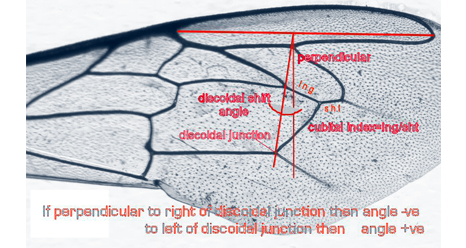Bee Breeding Secrets
There is something about bees that trigger happiness in people. Whether it’s the thought of honey dripping on toast or admirationfor the organisation and industry of the little insects, you don’t have to be a bee keeper to like these pretty and industrious insects. Honey in itself is also highly regarded, be it for the taste, or the health-giving properties that are increasingly being assigned to it. But bees are also important for the pollination in nature and therefore agriculture.
But a bee is not just a bee; different strains and species of bee have different characteristics and behaviour patterns, so bee keepers and breeders need to be able to identify specific strains in order that they breed the most suitable bees for their requirements. There are obvious physical aspects that can be used such as size, colour or shape, but these methods are not foolproof and often hide specific strain differences. Another option is DNA testing, but this is an expensive and time consuming exercise, therefore a method first identified and introduced before the 1960’s can be used, known as morphometry.
Morphometry is a study of bee anatomy to establish race or strain characteristics that are otherwise difficult to ascertain. The types of anatomy studied are the wings, tongue length, Tomentum width (width of the band of hair on the body segments) and hair length. The most common test and study is on the bee wings, looking at vein formation. Specifically bee breeders look at the “cubital index”, which is the ratio between two vein segments of the cubital cell in a bee’s wing, and the “discoidal shift”, which measures the position of the discoidal joint in relation to the perpendicular through the distal lower joint in the radial cell.

The concept of understanding which bee strain or race is important for bee breeding; as the more purer bee strains can have a better temper (this is not always true, as some inbred bees can be very cross), and therefore there is a less chance of being stung, likewise they seem to keep cleaner and more organised hives than their hybrid cousins. Beyond these “housekeeping” issues there is the bees actual performance, for example researchers have found that certain strains of bee respond quicker to Spring stimulation than others, this is important if the bees are being used for pollination, as it means some strains of bees are more active earlier than others.
The more a bee keeper or bee breeder knows about his bees the more sure he can be about how they will perform and behave. And it seems beewing morphometry can give an indication of the strain or subspecies of Apis mellifera.
The Dark European honey bee, or Apis mellifera mellifera, is defined by having a cubital index of no more than 1.9 and the discoidal shift angle of no more than 0 (although these are ideal standards and not always attainable). Results from the measurements from any hive or colony are displayed on a scattergram and bee keepers and breeders can see how pure their bees are. Jacob Kahn has taken this research further and used Genstat to analyse the measurements more in keeping with quantitative population genetics. He doubled the sample size of 30, normally used by honey bee morphometrists, to a sample size of 60 . 10 of these have had their measurements checked for goodness of fit of normal distribution, and the results showed that only one did not conform to normality. He then looked at any correlation between the cubital index and discoidal shift and found that 6 samples displayed correlation. Jacob hopes that further research and work on this will verify his findings, which would suggest that any correlation indicates genetically purer samples. Jacob suspects that there is a misconception, especially among amateurs, as to what is pure and what is a hybrid. “The term hybrid is generally misunderstood by beekeepers,” says Jacob, “We can talk here about two levels of hybridization: a cross between species can be termed hybridization, but a cross between two strains within a subspecies carrying different alleles of particular loci can also be said to be hybrids. and it is this aspect of population genetics which I am hoping to clarify with the help of Genstat.”

At the moment bee keepers and breeders are content with looking at simple scattergrams to check for bee purity, however Jacob’s work shows that there maybe even more details to discover about bee species or strains. Either way GenStat’s sound statistics has enabled Jacob to dig deeper into the data and initial analysis to find out more about the bees. This additional level of information should allow better definition of variants of Apis m. mellifera which in turn gives bee keepers and breeders greater information on their hives and colonies so they can breed better performing bees.
Read more about Jacob and the work of the Galtee Bee Breeding Group.
By Allen
